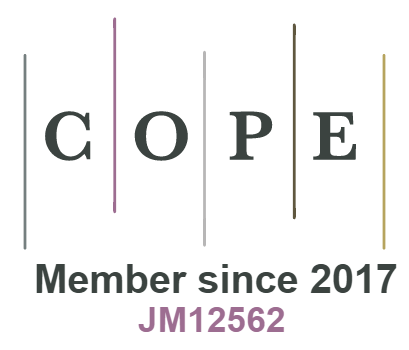Dynamic Characteristics of the Closed Soliton Solution and Phase Analysis of the (3+1)-Dimensional Jimbo-Miwa Equation
DOI:
https://doi.org/10.18034/ei.v12i1.745Keywords:
New auxiliary equation approach, (3+1)-dimensional Jimbo Miwa model, Exact Solution, Travelling wave solutions (TWSs)Abstract
The main purpose of this paper is to investigate abundant exact traveling wave solutions (TWSs) of the (3+1)-dimensional Jimbo Miwa model utilizing the innovative auxiliary equation technique. By applying this powerful technique, the obtained solutions reveal and elucidate various types of waves, which are essential for comprehensive studies of complex phenomena such as ocean dynamics and other related scientific and engineering areas. The auxiliary equation method has proven successful in yielding new and analytical soliton solutions, including trigonometric functions, rational functions, hyperbolic functions, and exponential functions for the given model. The results of these solutions are represented using 3-D, contour, and combined 2-D graphs, offering a more detailed and insightful visual interpretation. In particular, the velocity effect becomes more comprehensible when analyzing the 2-D plots. This paper also includes further phase plane analysis of the model to examine the solutions' behavior and characteristics. The results of this investigation have been compared with other researchers' findings available in the literature. This technique proves highly effective for various nonlinear models in generating innovative soliton solutions, which are essential in applied science and engineering.
Downloads
References
Alaoui, M. K., Uddin, M., Roshid, M. M., Roshid, H. O., Osman, M. S. (2024). Modulation instability, and dynamical behavior of solitary wave solution of time M-fractional clannish random Walker's Parabolic equation via two analytic techniques. Partial Differ. Equ. Appl. 12, 101011.
Al-Ramadhani, S. (2024). On the Reduction and Solution of The Reverse Space-Time Nonlocal Fokas–Lenells Equation. Partial Differ. Equ. Appl. 101046.
Alshammari, F.S., Asif, M., Hoque, M.F., Aldurayhim, A. (2023). Bifurcation analysis on ion sound and Langmuir solitary waves solutions to the stochastic models with multiplicative noises. Heliyon. 9(6).
Alshammari, F.S., Roshid, H.O., Alkhorayef, A.S., Elsadany, A.A., Aldurayhim, A. (2024). Dynamics of solitary waves, chaotic behaviors, and Jacobi elliptic wave solutions in telecommunication systems. Results Phys. 60, 107629.
Arshed, S., Akram, G., Sadaf, M., Irfan, M., Inc M. (2024). Extraction of exact soliton solutions of (2+1)-dimensional Chaffee-Infante equation using two exact integration techniques. Opt Quantum Electron. 56(6), 1-15.
Baskonus, H.M., Bulut, H., Sulaiman, T.A. (2019). New complex hyperbolic structures to the lonngren-wave equation by using sine-gordon expansion method. Appl. math. nonlinear sci. 4(1), 129-138.
Khater, M.M., Seadawy, A.R., Lu, D. (2018). Dispersive optical soliton solutions for higher order nonlinear Sasa-Satsuma equation in mono mode fibers via new auxiliary equation method. Superlattices and Microstructures. 113, 346-358.
Liu, J.G., Yang, X.J., Feng, Y.Y. (2020). On integrability of the extended (3+1)-dimensional Jimbo‐Miwa equation. Math. Methods Appl. Sci. 43(4), 1646-1659.
Lü, X., Ma, W.X., Khalique, C.M. (2015). A direct bilinear Bäcklund transformation of a (2+ 1)-dimensional Korteweg–de Vries-like model. Appl. Math. Lett. 50, 37-42.
Ma, W.X. (2005). Complexiton solutions of the Korteweg–de Vries equation with self-consistent sources. Chaos, Solit. Fractals, 26(5), 1453-1458.
Ma, W.X. (2022). Soliton solutions by means of Hirota bilinear forms. Partial Differ. Equ. Appl. 5, 100220.
Ma, W.X., Huang, T., Zhang, Y. (2010). A multiple exp-function method for nonlinear differential equations and its application. Phys. scr. 82(6), 065003.
Ma, W.X., Lee, J.H. (2009). A transformed rational function method and exact solutions to the (3+1)-dimensional Jimbo-Miwa equation. Chaos Solit. Fractals. 42(3), 1356-1363.
Ma, W.X., Zhang, Y., Tang, Y., Tu, J. (2012). Hirota bilinear equations with linear subspaces of solutions. Appl. Math. Comput. 218(13), 7174-7183.
Ma, W.X., Zhu, Z. (2012). Solving the (3+1)-dimensional generalized KP and BKP equations by the multiple exp-function algorithm. Appl. Math. Comput. 218(24), 11871-11879.
Malfliet, W. (2004). The tanh method: a tool for solving certain classes of nonlinear evolution and wave equations. Comput. Appl. Math. 164, 529-541.
Mehdipoor, M., Neirameh, A. (2015). New soliton solutions to the (3+1)-dimensional Jimbo-Miwa equation. Optik. 126(23), 4718-4722.
Mirhosseini-Alizamini, S.M., Rezazadeh, H., Srinivasa, K., Bekir, A. (2020). New closed form solutions of the new coupled Konno–Oono equation using the new extended direct algebraic method. Pramana. 94(1), 52.
Mirzazadeh, M., Eslami, M., Milovic, D., Biswas A. (2014). Topological solitons of resonant nonlinear Schrödinger’s equation with dual-power law nonlinearity by (G'/G)-expansion technique. Optik. 125(19), 5480-5489.
Osman, M.S., Korkmaz, A., Rezazadeh, H., Mirzazadeh, M., Eslami, M., Zhou, Q. (2018). The unified method for conformable time fractional Schro¨dinger equation with perturbation terms. Chin. J. Phys. 56(5), 2500-2506.
Roshid, M.M., Ali, M.Z., Rezazadeh, H. (2020). Kinky periodic pulse and interaction of bell wave with kink pulse wave propagation in nerve fibers and wall motion in liquid crystals. Partial Differ. Equ. Appl. 2, 100012.
Tuffour, F., Barnes, B., Dontwi, I. K., Darkwah, K. F. (2024). The modified homogeneous balance methods for solving Korteweg–DeVries equations. Partial Differ. Equ. Appl. 101035.
Ur Rehman, H., Iqbal, I., Mirzazadeh, M., Hashemi, M.S., Awan, A.U., Hassan, A.M. (2024). Optical solitons of new extended (3+1)-dimensional nonlinear Kudryashov’s equation via ϕ^6-model expansion method. Opt Quantum Electron. 56(3), 279.
Wang, X., Bilige, S. (2020). Novel interaction phenomena of the (3+1)-dimensional Jimbo-Miwa equation. Commun Theor Phys. 72(4), 045001.
Wang, Y.H., Wang, H., Dong, H.H., Zhang, H.S., Temuer, C. (2018). Interaction solutions for a reduced extended (3+1)-dimensional Jimbo-Miwa equation. Nonlinear Dyn. 92, 487-497.
Wazwaz, A.M. (2007). Multiple-soliton solutions for the KP equation by Hirota’s bilinear method and by the tanh-coth method. Appl. Math. Comput. 190(1), 633-640.
Wazwaz, A.M. (2017). Multiple-soliton solutions for extended (3+1)-dimensional Jimbo-Miwa equations. Appl. Math. Lett.; 64, 21-26.
Yue, Y., Huang, L., Chen, Y. (2019). Localized waves and interaction solutions to an extended (3+1)-dimensional Jimbo-Miwa equation. Appl. Math. Lett. 89, 70-77.
Zhang, H., Ma, W.X. (2014). Extended transformed rational function method and applications to complexiton solutions. Appl. Math. Comput. 230, 509-515.
Zhang, R.F., Li, M.C., Yin, H.M. (2021). Rogue wave solutions and the bright and dark solitons of the (3+1)-dimensional Jimbo-Miwa equation. Nonlinear Dyn. 103(1), 1071-1079.
Zhang, X., Chen, Y. (2017). Rogue wave and a pair of resonance stripe solitons to a reduced (3+1)-dimensional Jimbo-Miwa equation. Commun Nonlinear Sci Numer Simul. 52, 24-31.
Zhang, Y., Sun, S., Dong, H. (2017). Hybrid solutions of (3+1)-dimensional Jimbo-Miwa equation. Math. Probl. Eng. 2017(1) 5453941.
Downloads
Published
Issue
Section
License
Copyright (c) 2024 M. Asif; Harun-Or Roshid; M. M. Rahman; M. F. Karim; A. Paul; Mst. Shekha Khatun

This work is licensed under a Creative Commons Attribution-NonCommercial 4.0 International License.
Engineering International is an Open Access journal. Authors who publish with this journal agree to the following terms:
- Authors retain copyright and grant the journal the right of first publication with the work simultaneously licensed under a CC BY-NC 4.0 International License that allows others to share the work with an acknowledgment of the work's authorship and initial publication in this journal.
- Authors are able to enter into separate, additional contractual arrangements for the non-exclusive distribution of the journal's published version of their work (e.g., post it to an institutional repository or publish it in a book), with an acknowledgment of its initial publication in this journal. We require authors to inform us of any instances of re-publication.









